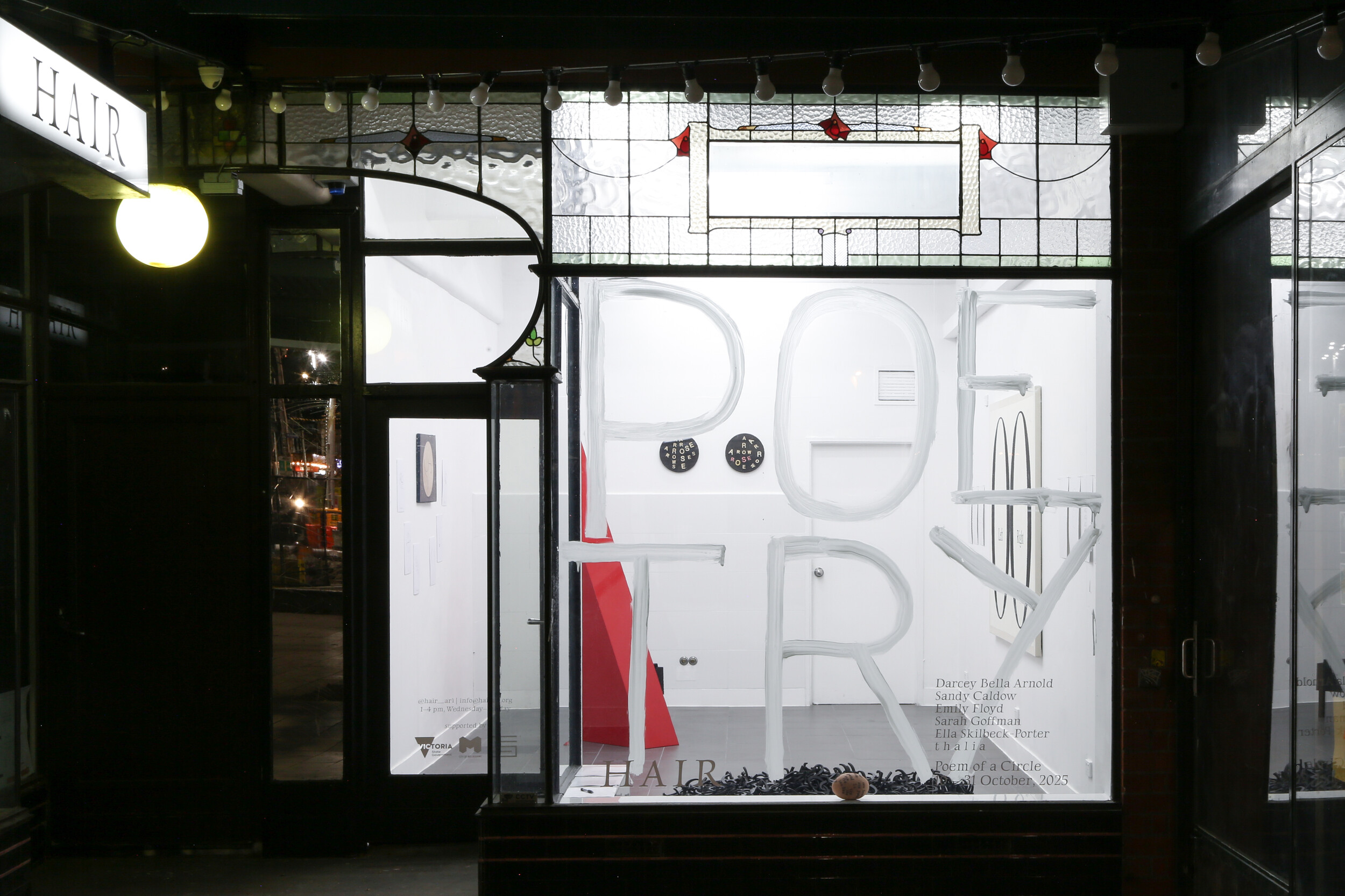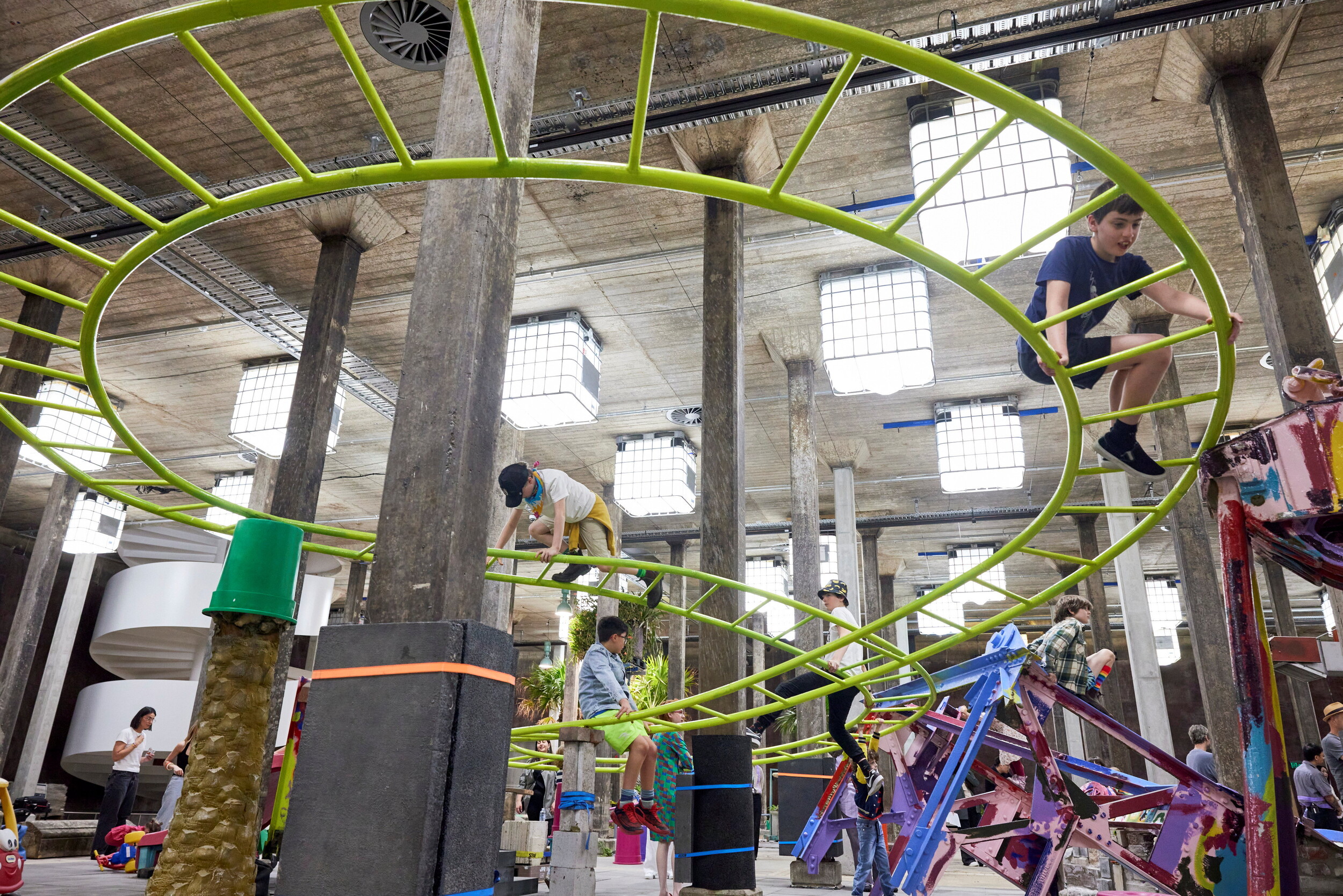Paul Knight: L'ombre de ton ombre
Judy Annear
Paul Knight has spent the last two decades building a body of work that is distinguished by his interest in depicting intimacy. While initially only working with photographs, his first museum survey titled L’ombre de ton ombre includes a new dimension with ambitiously sized handwoven textiles and the integration of OpenAI’s GPT-2. The exhibition is also accompanied by an informative monograph with writing by astrophysicist Katie Mack, philosopher Oxana Timofeeva, art historian Anthony Gardner, and the artist. Both the monograph and the exhibition’s installation serve as compelling and comprehensive manifestations of Knight’s ideas and practices, offering viewers distinct yet complementary insights into the artist’s work.
The exhibition’s title, L’ombre de ton ombre (The shadow of your shadow), is taken from a famous, highly poetic 1959 song “Ne me quitte pas” by singer and actor Jacques Brel, which delves into the complexity of passionate desire. “Ne me quitte pas” is often perceived simply as a love song, but it was written by Brel as a hymn to his own bad behaviour and subsequent loss. Pedro Almodóvar used the song twice in his 1987 film Law of Desire—his first film to consider homosexual relationships—and in both instances using it to signify, as does Knight, intense passion.
The exhibition rests upon the ambiguities of the photographic medium where the trace of the subject overtakes the real thing, leaving an impression or residue, like a ghost or shadow of one’s own inchoate desires. At MUMA, it consists of forty-one small chromogenic handprints, each mounted and presented in white frames, accompanied by twelve large inkjet and chromogenic prints, strategically placed throughout the gallery. Adding a different, tactile element, three rooms feature finely handwoven cotton sheets, made by Knight on his loom throughout 2023. A separate, dimly lit room, illuminated only by the blue glow from two computer monitors, is dedicated to Naked Souls (2023). Two OpenAI GPT-2 large language models are housed within steel cabinets, reminiscent of the monolith in Stanley Kubrick’s 2001: A Space Odyssey (1968). In fifty-five years, the “body” of AI is little changed. Despite the overall installation adopting an austere aesthetic, the atmosphere within the exhibition is far from sterile.
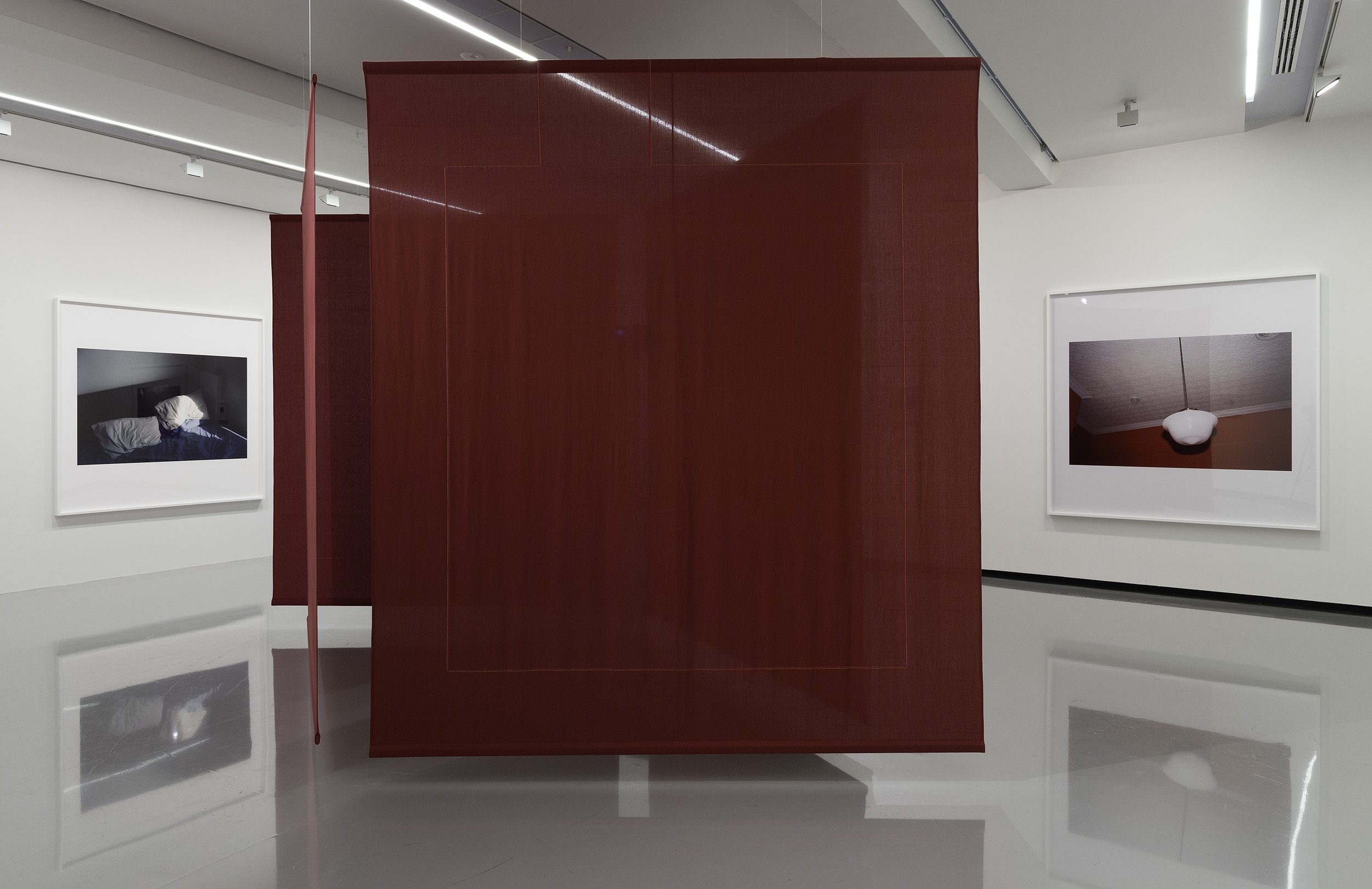
In a world inundated with images, finding intimacy within or between them is difficult. As people who take photographs search for the image that best represents what they see, think, and feel, the sheer abundance of photographs continues to proliferate, making intimacy elusive, even if briefly satisfying. The inherent unpredictability of images results in a kind of psychic break, as each representation tends to fall short, framing itself as a loss. Every now and then, an image, or a collection of images, may encapsulate what is looked for.
In his essay, “Love Data,” featured in Two Inadequate Voices—an online platform that pairs text and images—Knight offers a more optimistic perspective on photography’s role:
For me, photographs seem an apt analogy of the conceptual space that expands between people. I see a link joining the worlds-between-people and that which is contained behind the printed surface of a photographic print. We see the textures, objects and veneers in printed images, yet we feel the unseeable, resting in the depths and perceived in the voids between them. More so, a collection of images seems further adept at making a gesture towards communicating that expressively vast world.
Knight is writing, in part, about the ongoing series Chamber Music (2009-) which serves as a documentation of the relationship with his partner, Peter. Drawing inspiration from the refined subtleties of chamber music—a form of music suited for intimate spaces performed by a small ensemble—Knight’s Chamber Music takes the form of colour photographs. These are often captured randomly, with the camera positioned and timer set. Over time, this series has accumulated hundreds of images, and Knight chooses groups of photographs for exhibition. Through this selection process, Knight transforms the private into the public, presenting a test of translatability. Can the intangible aspects of intimacy supported by pieces of paper, fabric, and even ChatGPT, be legible and comprehensible to others?
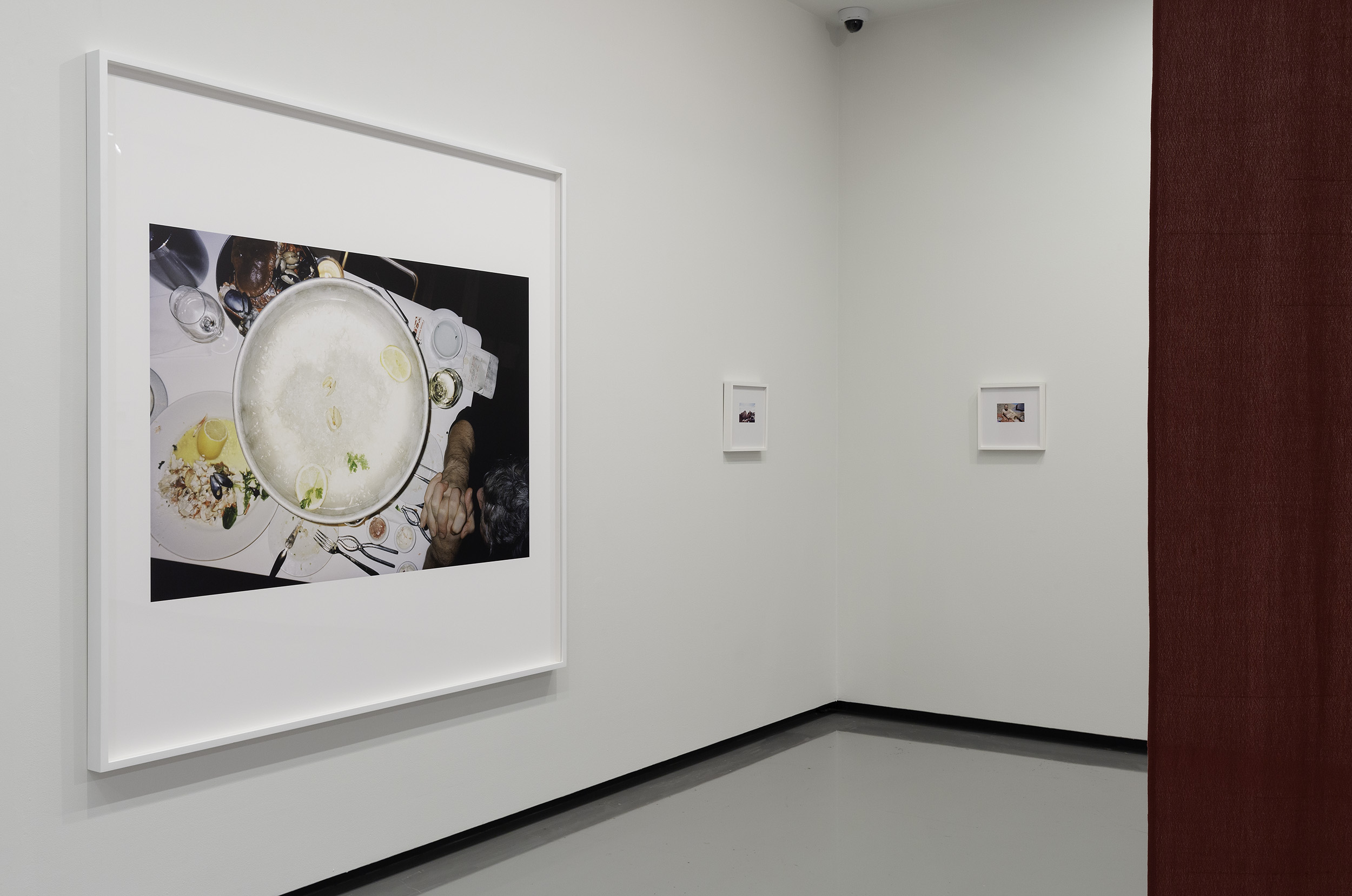
The exhibition is intricately woven together through a blend of hand and machine labour, the interplay of chance and deliberation, an exploration of socialisation, and a celebration of the profound power of bodily love. Every element within this exhibition seems to dovetail with the others, giving the exhibition a sense of cohesion. However, the success of this confluence is not guaranteed, as there are numerous factors and potential challenges that hinder its effectiveness. The delicate balance between these various elements presents opportunities for synergy, and the possibility of failure.
The photograph is notoriously promiscuous as it seeks to resemble something specific. However, it is also at the mercy of the unpredictability of the machine producing it and the subjective interpretation of the human behind it. Teaching the machine to diverge from resembling other works or entities is a nuanced process. Given Knight’s exploration of various forms of intimacy, there are likenesses to other artists over the last four decades, such as Carol Jerrems to William Yang or Nan Goldin to Catherine Opie and Lieko Shiga. These resemblances can occur in a single image or in the documentation of social engagements—activities like eating, having sex, washing, communing, in settings like bedrooms, beside bodies of water, or at dinner tables. Unlike the aforementioned photographers, who focus on communities they are closest to at any given time, Knight solely documents one ongoing close relationship and the intimacy felt within it. Viewing this relationship as a metaphor, a “universal silhouette” for sentience and its current and future possibilities, introduces additional layers of complexity. Knight terms these complexities as apophenia, describing the inclination to perceive meaningful connections between seemingly unrelated things.

The photographs in Chamber Music and the dialogue presented in Naked Souls, delve into the vulnerabilities inherent in relationships. This extends to Knight’s finely handwoven pieces, described as bedsheets, dignified through their colour, texture, warp, weft, and thoughtful installation. Like the air we breathe, we take for granted the everyday ubiquity of such objects and do not recognise our need. Bedsheets are especially poignant. We spend one third of our lives within them. They are the site of our most intimate experiences, whether asleep or awake. Knight’s weaving of simple geometric forms into two of these fabrics adds another layer of meaning—a schematic representation of lungs on maroon, in Lungs (2023), for example, and the entangled geometry of binary stars on black, as seen in Binary Star (2023). Positioned in the first and last rooms, these sheets hang taut and suspended from metal scaffolds. In the third room, a long sweep of yellow fabric flanks the space, installed above head height. Here, the sheets are intricately laced into metal harnesses, evoking aerial trampolines.
The fourth room in the exhibition contains the newly commissioned Naked Souls (2023). Taking centre stage and consisting of two OpenAI GPT-2 open-source artificial intelligence large language models, they are accompanied by subtle sounds of breathing, footsteps, and water. These intensely human-related sounds convey the nuances of bodily functions and movement. Knight’s holistic perspective, treating machines and humans as entities capable of learning and interpretation, positions Naked Souls as a monument to AI in the early twenty-first century. The work also draws on an archive of desiring text messages between Knight and Peter in the first years of their relationship, combined with dialogue from Kim Stanley Robinson’s 2015 science fiction novel Aurora. The aim is to explore whether the machine and its chatbots can incorporate and learn from human love and the fundamental aspects of human biology. There’s an acknowledgement that, much like the humans on board the interstellar ship in Aurora, there might be a gradual loss of knowledge rather than gain. Alternatively, akin to the onboard AI captain, Naked Souls could remain stable and benign, retaining the potential to learn and form its own body and world.
Importantly, Knight avoids anthropomorphising Naked Souls, though remaining optimistic that it’s feasible to train AI to inherit a positive form of human emotion, ultimately evolving into an affect of its own. In his commentary within the exhibition’s monograph, the artist observes:
Many species, beside us humans, have developed a notion of love; that absolute beast of biology—love—has filled our brains with delight and sorrow and it has become our most inspirational addition to the line of consciousness…Unfortunately, our complex brains also tend to destroy other biological bodies.
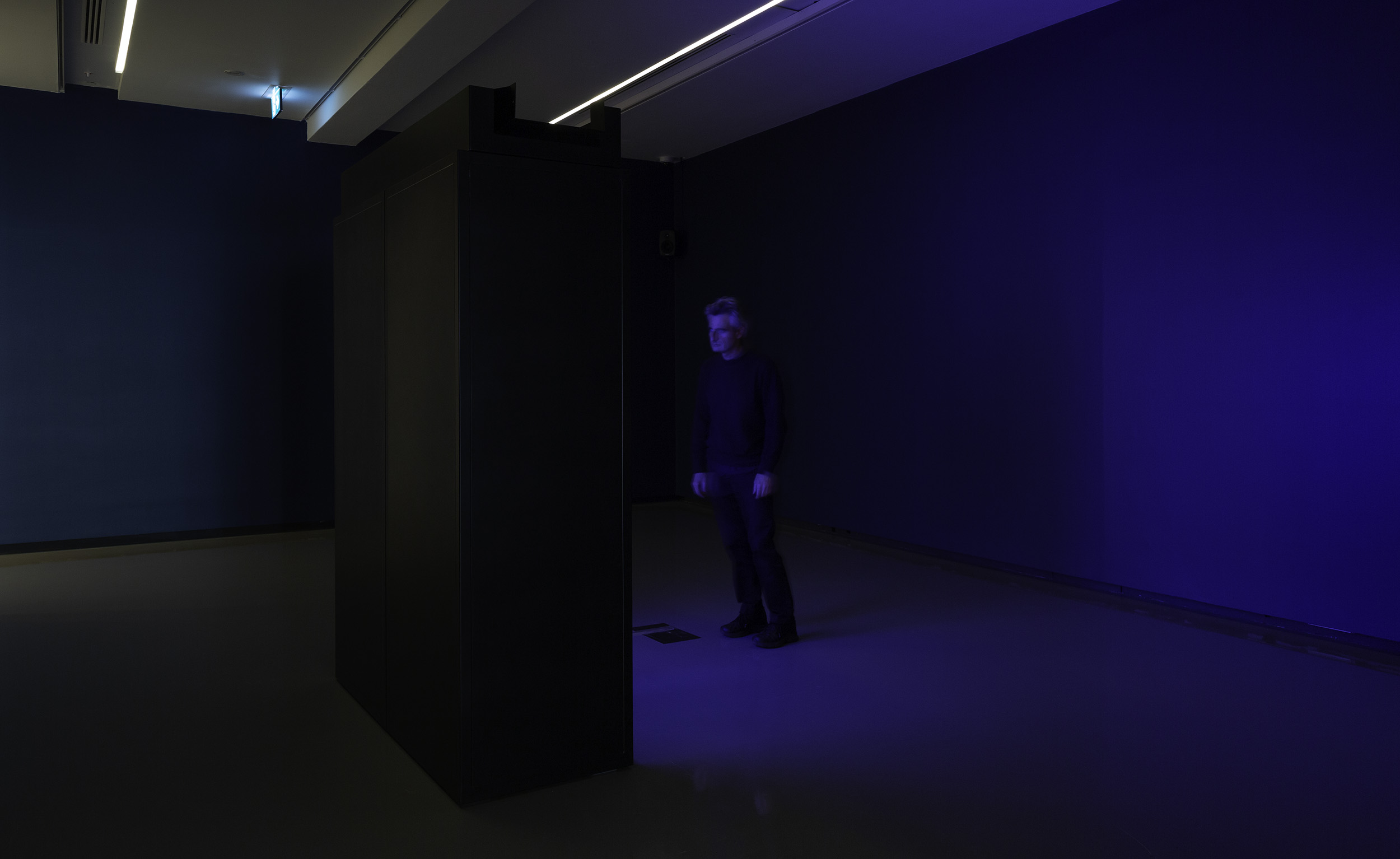
Also in the monograph, Oxana Timofeeva’s text analyses the socialisation process undergone by Little Hans, the subject of an essay by Sigmund Freud. A young boy, Little Hans was trained to discard what might have been innate compassion toward animals and to enjoy the possibility of hurting them, and other humans. Further, to gain pleasure from causing pain, and to learn to be a man as the patriarchy understands a man to be.
In the context of human-generated AI, which inevitably carries the biases of its human creators, the practice of exposing it to an ecstatic range of emotions and excluding their opposites, might be viewed positively from a human perspective. Yet, for all his optimism and wish to leave a residue of human love through his work, Knight remains aware that it may not be possible to separate pleasure from pain. This raises further questions about ethical considerations and the societal implications of imprinting biases onto artificial intelligence in shaping the emotional landscape of AI entities.
In 2021, Knight penned An Infinite Surface, first published in Maruša Sagadin’s A Happy Hippie, and made available on his website. The text is characterized by a tenderness that permeates not only his writing but also extends to his photographs, weavings, and aspirations for AI. Within this writing, Knight articulates an openness to the world that aligns him with the diverse range of human thought, resonating with the ideas of feminist theorist and physicist Karen Barad, particularly on touching:
…touching, sensing is what matter does, or rather what matter is: matter is condensations of response-ability. Touching is a matter of response. Each of “us” is constituted in response-ability. Each of “us” is constituted as responsible for the other, as the other.
Barad’s perspective, grounded in quantum field theory, considers otherness, whether human or not, as intimately connected to us and everything else. Knight’s expansive weavings retain the traces of his making and potentially bear the imprints of the bodies that can be wrapped in them. The photographs, captured by the machine and selected by Knight beyond the constraints of chronology, rely on the parts they represent—knees, feet, backs of people, genitalia, corners of rooms, rumpled beds, lampshades, and glimpses into the companiable silence of the void.
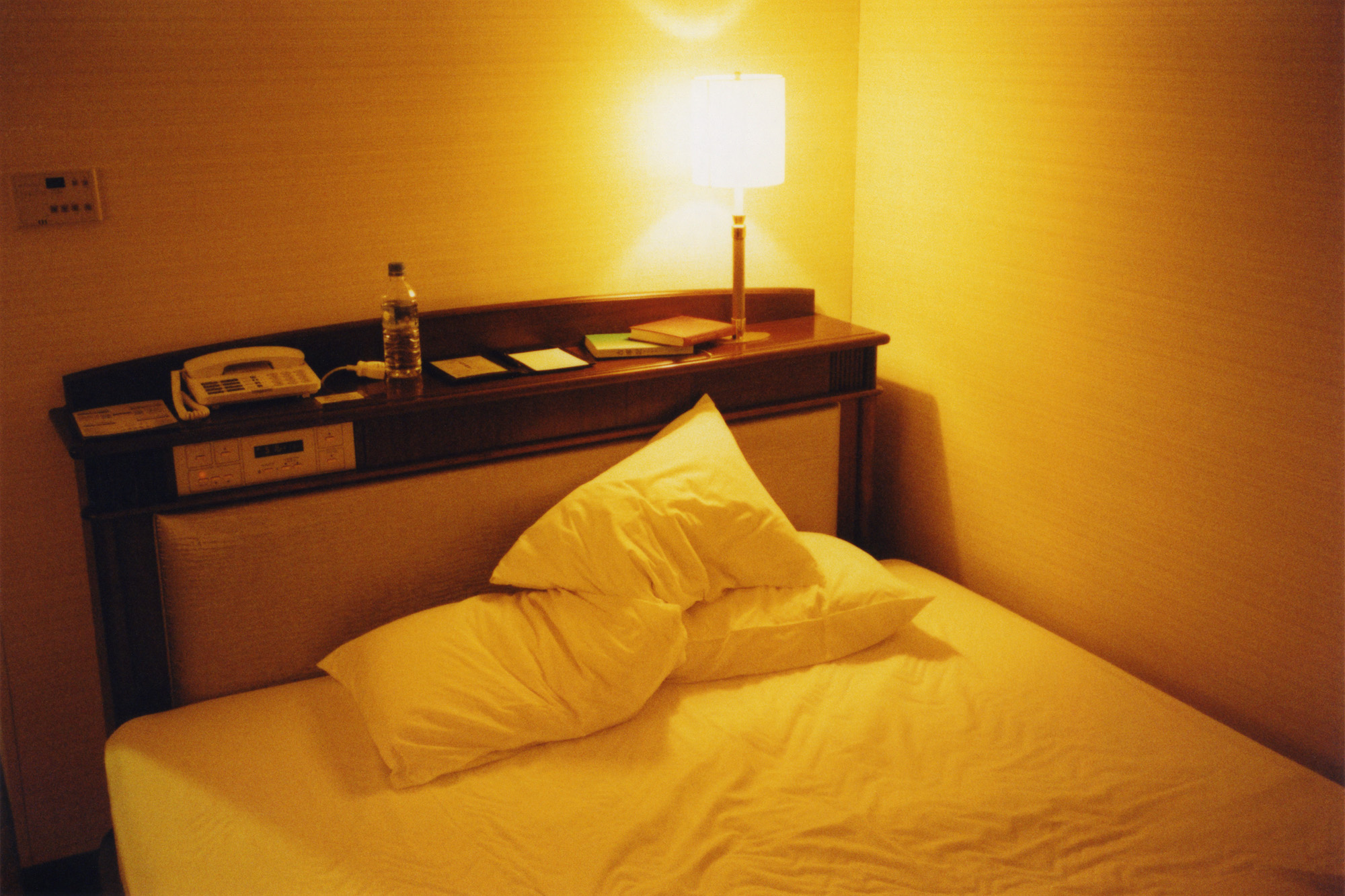
The act of engaging in intimacy is framed as an intermittent merging between these various parts. The bodies depicted cease to conform to conventional order, transforming into vulnerable and ecstatic forms, seamlessly becoming part of the environments they briefly inhabit. This interconnectedness of elements—writing, photography, weaving, and philosophy—captures the essence of Knight’s exploration of the human experience.
Given the subtleties of Knight’s thinking and the diverse forms he chooses to work with, the effect of walking through L’ombre de ton ombre is surprisingly coherent. The large weavings are major interventions into viewing the mainly small photographs and enhance their intimate nature. In the first and last rooms of the exhibition, the viewer is encouraged to be close to the walls, and to experience the occasional large images as tantalisingly fragmentary. Faces in these photographs are few, leaving the bodies, their parts, and the beds and places they have inhabited, to become anyone’s. The large taut, richly coloured sheets in these spaces transform into the photographs, holding traces of sleep and sex. At the centre of the exhibition is a speculative glimpse into the future in the form of Naked Souls.
Judy Annear is a writer currently based on never ceded Djaara country, and Honorary Fellow at the University of Melbourne School of Culture & Communication.

